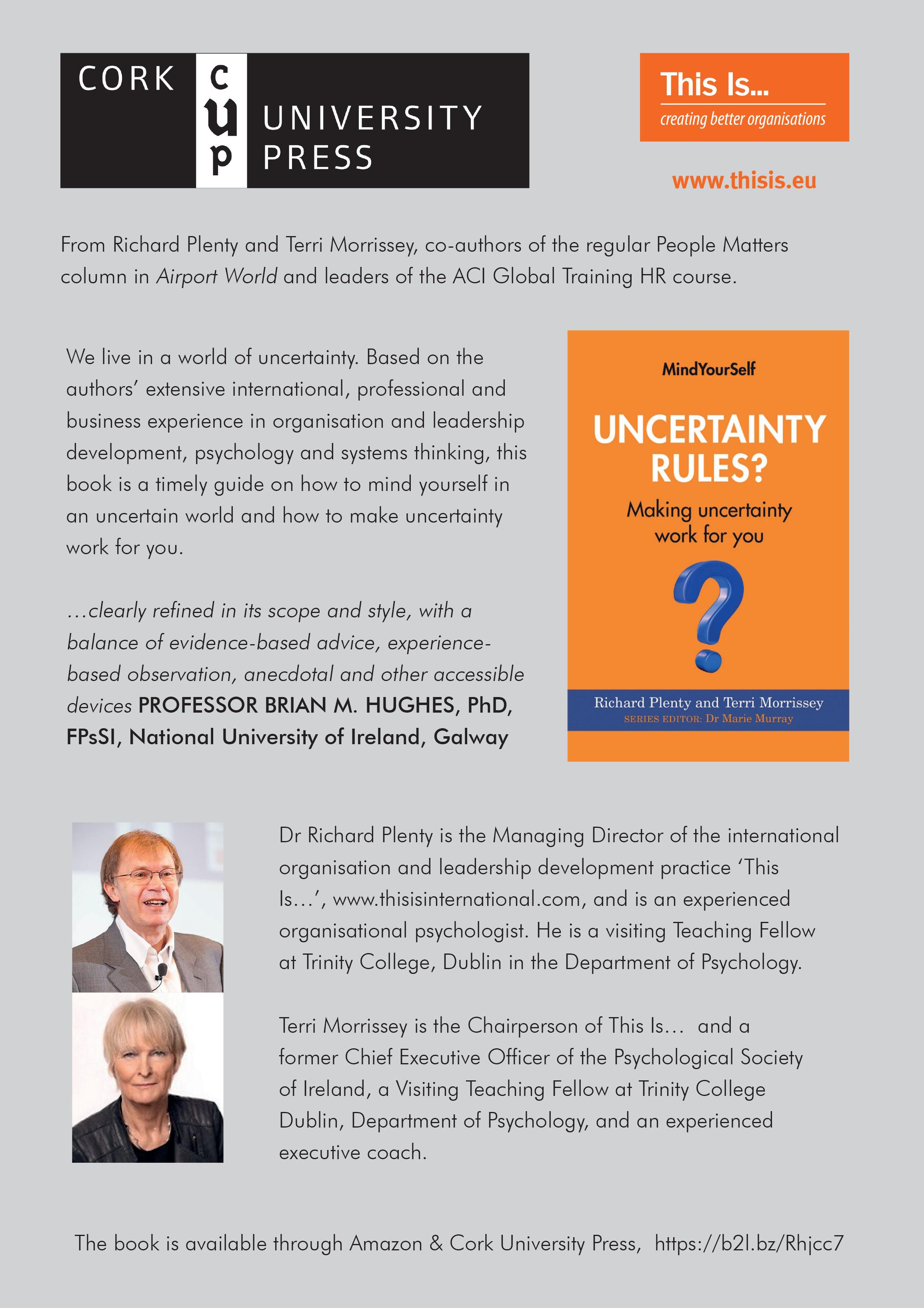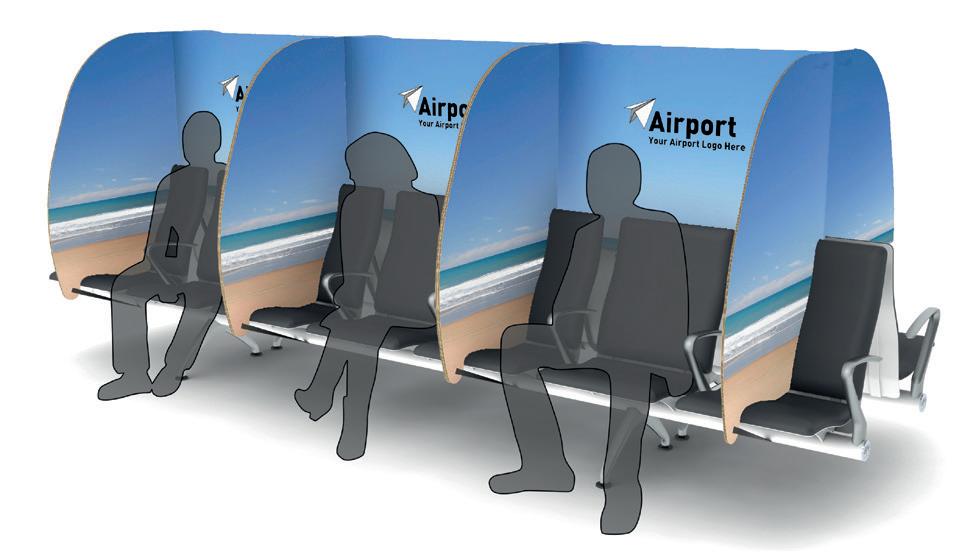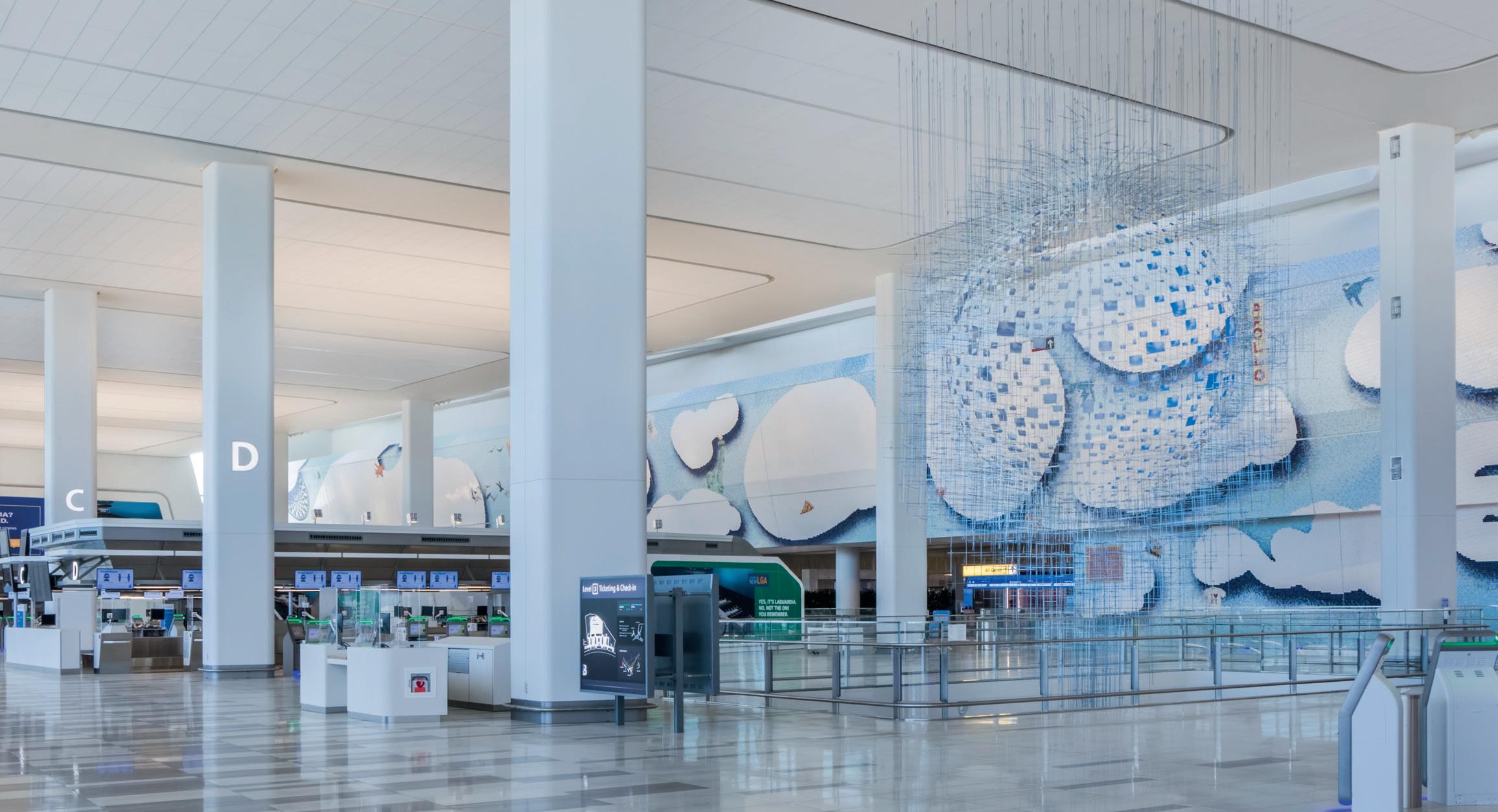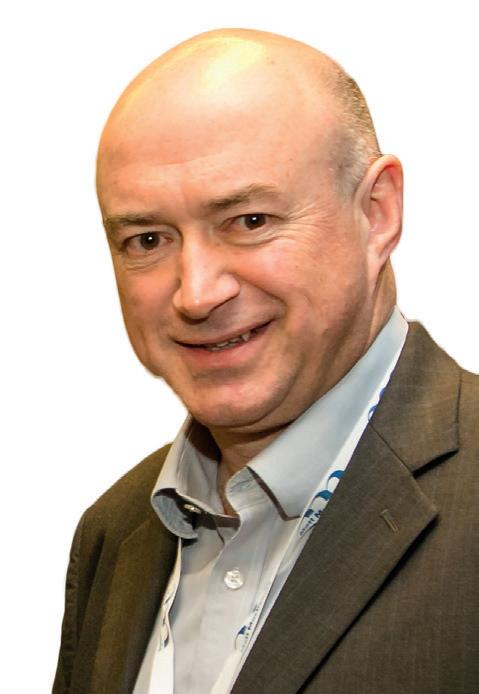
9 minute read
Vienna calling
Vienna Airport’s Julian Jäger talks to Joe Bates about the ongoing transformation of Terminal 2, surviving COVID-19 and what the future might hold for Austria’s gateway to the world.
Julian Jäger is the type of boss that is always upbeat and positive, and despite today’s difficult operating conditions, he has plenty to be optimistic about as Vienna Airport, as outlined in its master plan, will open its new and improved Terminal 2 early next year. It is a big thing for the airport, as its co-CEO has reminded us with a number of number of social media posts this summer showing the ongoing transformation of Terminal 2.
Advertisement
In May, for example, he posted on Linkedin: “We build for the future! There will be life after hashtag#corona and we are preparing vigorously on all levels.
“The restructuring of our Terminal 2 is in full swing and will bring new, centralised security checks, new lounges and more convenience for our passengers. I look forward to the opening, which we will celebrate in less than a year from now!”
The fully refurbished and transformed terminal is designed to make using Vienna Airport (VIE) even more passenger friendly and operationally efficient than it is now, which will be something, as the airport already boasts one of the fastest minimum connecting times in Europe (25 minutes for Austrian Airlines) and between 2017 and 2019 managed to accommodate an extra seven million passengers.
VIE’s very own airport city, AirportCity Vienna – essentially comprising offices, shops and aviation related facilities such cargo and logistics buildings – also continues to take shape on the airport site with Office Park No.4 opening this summer and plans being drawn up for the construction of a new hotel.
While traffic is also beginning to show the first signs of coming back, with the airport handling between 15,000 and 20,000 passengers in July compared to the all-time low of mid-March when just a couple of hundred passengers a day used VIE.
Putting the upturn in perspective though, the airport handled a record 31.7 million passengers (+17%) in 2019 and would normally expect to welcome around 100,000 a day during the busy summer months of June, July and August.
“We still have a long way to go, but we are moving in the right direction now, and with people in the terminal and the shops open, the place is beginning to feel like an airport again,” says Jäger.

His positivity again shines through when he notes that VIE’s ability to bounce back from adversity is one of the key things he has discovered about it during his near 20 year-long association with the airport, the last nine of which have been as co-CEO with Dr Günther Ofner.
Indeed, the only thing to get anywhere near denting Jäger’s endearing enthusiasm is the fact that VIE has had to postpone the second phase of the airport’s €500 million expansion programme by at least one year to avoid any further capital expenditure while the world continues to come to terms with COVID-19.
Phase two was set to include a revamp of the airport’s non-Schengen East Pier and a 70,000sqm extension to Terminal 3, referred to locally as the T3 Southern Enlargement, by the end of 2023.
“For me, one of the biggest pleasures I get from my job is planning and developing new infrastructure that will improve the quality of the airport for our passengers and other guests, so I am really disappointed by the delay, but it is the right thing to do in the current circumstances as spending money is not really an option,” says Jäger.
He adds that the delay in doubly painful for him as VIE has been planning for the new additions for a number of years and he was personally looking forward to showcasing the transformed airport to the world in 2023.
However, ever pragmatic, he reminds us that the projects are only on hold and notes that VIE was lucky that it wasn’t in the middle of the costly
development projects when COVID-19 struck. He is also quick to point out that an entirely separate infrastructure development project, the airport’s third runway, remains firmly in VIE’s plans, but with no definite dates set for its addition, the timetable for its construction is likely to be delayed until traffic levels dictate that it is necessary.
“It is very difficult to forecast what traffic we will handle in August, 2020, let alone next year, so it’s almost impossible to make any predictions now about when we will need the new facilities,” explains Jäger.
“What I do think is that it could be 2023, 2024 or even 2025 before aviation is back to 2019’s traffic levels, so we will have to be patient and ensure that our plans remain flexible and capable of being updated to any changing circumstances.”
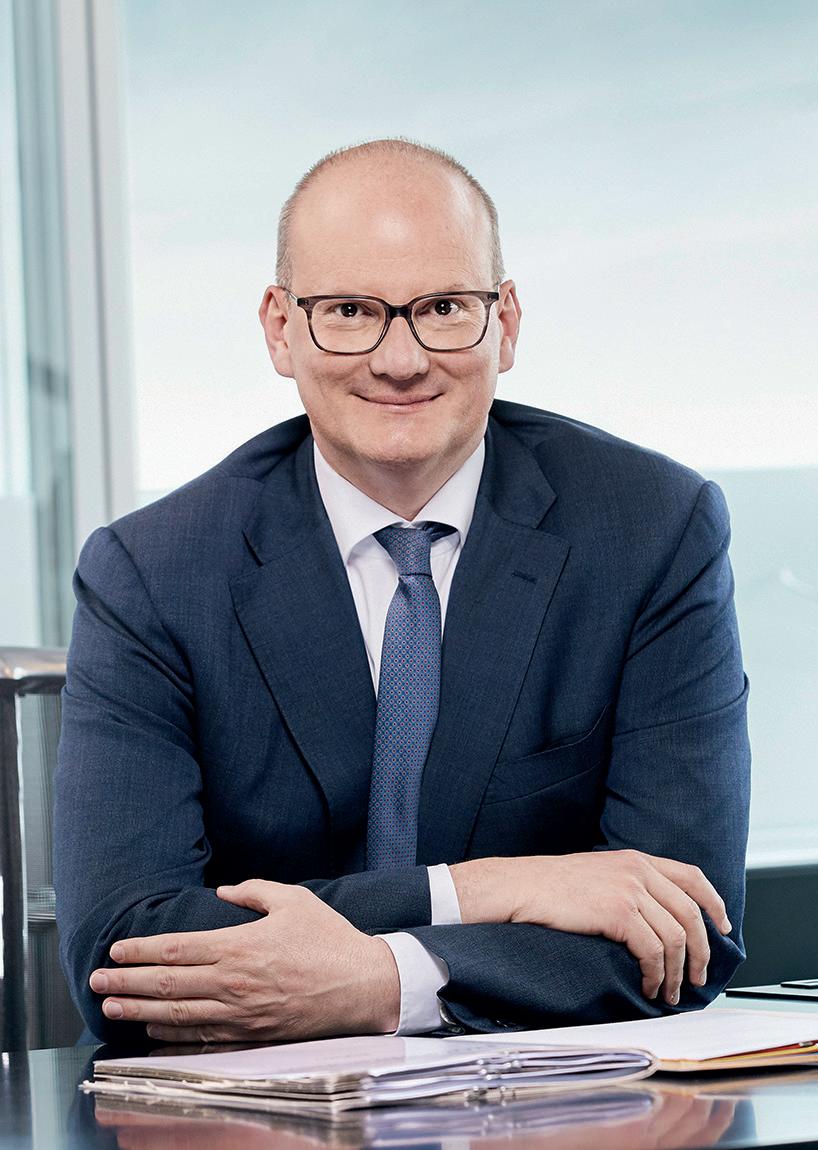
Traffic and market appeal
It may come as a surprise to some of you to learn that last year’s impressive passenger figures ensured that VIE ranked among Europe’s 20 busiest airports for the first time, and the gateway also improved its punctuality record, becoming the third most punctual airport in Europe for its size, and 15th in the world.
The airport has traditionally been a Central European hub for transfer traffic between eastern and western Europe, and Jäger is confident that this will continue to be the case when full services resume post pandemic.
In 2019, a total of 77 airlines served VIE, between them operating flights to 217 destinations in 68 countries. National flag carrier, Austrian Airlines, is the biggest operator at VIE accounting for around 43% of the market, followed by 100%-Ryanair owned subsidiary, Lauda (8%) and then fellow low-cost carriers Eurowings (7.2%), Wizz Air (6.6%) and easyJet (3.9%).
Austrian’s services to the US and the Far East, where it flies to Bangkok, Tokyo and a handful of cities in China, are the mainstays of its long-haul network, but it is arguably VIE’s high number of intra-European flights that give it its strength and make it standout as a connecting hub.
Indeed, intra-European services account for 85% of all the flights out of VIE, and with long-haul services expected to take longer to recover than the short-haul market, Jäger believes that VIE’s traffic mix could actually work in its favour and ensure that it recovers more quickly than Europe’s bigger hubs that are more dependent on flights to Asia-Pacific and North and South America.
The launch of four weekly non-stop B767 flights to Boston this summer by Austrian Airlines and a host of new short and mediumhaul connections by a combination of Belavia, Lauda, Wizz Air and others was expected to boost VIE’s passenger numbers by 3% or 4% in 2020, but COVID-19 has, unfortunately, put paid to that forecast and the new routes for now.
Health and wellbeing
Vienna is a pilot airport for the EU Aviation Safety Agency (EASA) and therefore considers itself to be one of the most health conscious and safest airports to use in the world.
All passenger operations at VIE are currently concentrated in Terminal 3, where check-in, boarding and information desks are equipped with plexiglass social distancing shields.
Temperature checks are mandatory, distance markings are placed throughout the boarding areas and hand disinfection stands have been installed in the terminal.
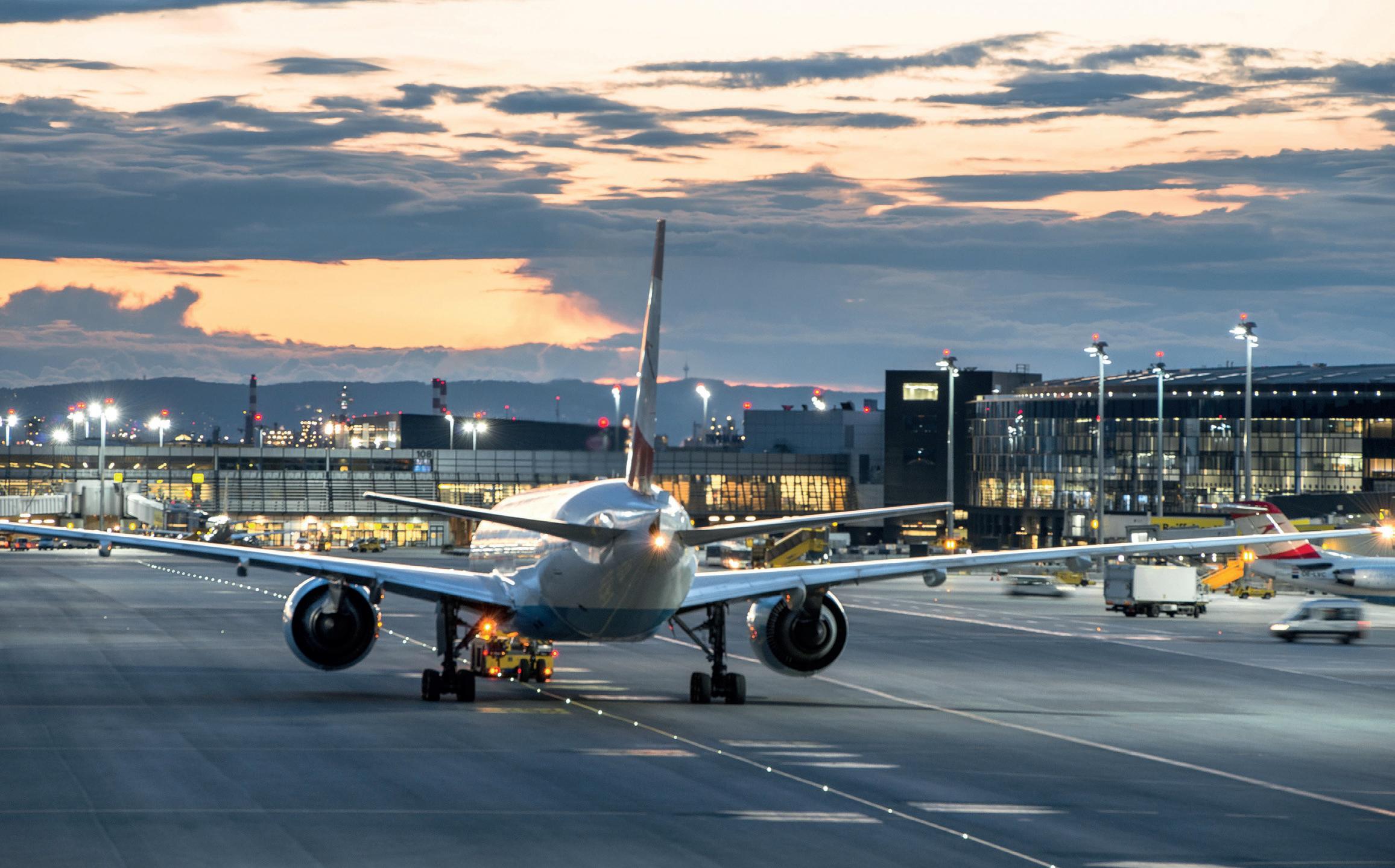
Like at other airports, all passengers and employees are required to wear protective face masks throughout the entire terminal area, and the number of passengers that use shuttle buses or can congregate in airport shops and bars is being limited.
“I really believe that all the anti-COVID measures in place at VIE and other airports across the world makes flying the safest form of transport available to us right now,” states Jäger.
He does, however, feel that Europe needs a co-ordinated, continent wide approach to COVID-19 so that the same measures, processes and procedures become standard practice at all airports.
And although he has no doubts about VIE and aviation’s eventual recovery from COVID-19, Jäger remains cautious about how long it will take, believing that people will need plenty of convincing that flying isn’t a health risk, particularly to long-haul destinations, where many airlines currently require passengers to wear face masks for the duration of flights.
“I don’t think COVID-19 is going away any time soon and even after there is a vaccine, many people might need to be convinced that it works and is safe to take, so realistically, aviation faces a long road back and I believe we are looking at anything from three to five years before we really start to see growth again,” he says.
SMART Airports Conference
Jäger is eagerly looking forward to VIE and Vienna hosting September’s SMART Airports, Cities & Regions Conference and Exhibition (September 28-30) as it is set be the first aviation event held in Europe since COVID-19 and will, of course, give him the chance to showcase the airport’s development plans to the world.
“We want to put Vienna on the map for the things it might not be best known for – its successful airport, growing airport city and being a hub for innovation, particularly in terms of IT start-ups and new technology,” he enthuses.
“We see ourselves as the centre of Central Eastern Europe that comprises not only Austria but the Czech Republic, Slovakia and Hungary. It is a growing economic region with vast untapped potential.”
Leading by example
Jäger really is a big fan of VIE and arguably few people know it better than him as although he has been co-CEO since 2011, he has effectively worked for the airport since 2002 in various roles that have included four years as the CEO and executive director of Malta International Airport due to the Vienna Airport Group’s stake in the gateway.
He says that most of his time with Vienna Airport Group could be characterised by rising traffic demand and planning for new infrastructure, but events such as SARS, 9/11 and now COVID-19 means that it hasn’t all been plane sailing.
In reply to what has he learned most about this time in the industry, he smiles, and says: “That you should never take anything for granted as COVID-19 and other events have shown us over the years.
“We are going through a bit of a rollercoaster ride at the moment but we have a great airport and a good management team, and this makes me confident that we will come out the other side of this in a good place and, in time, be even better than before.”
One of the first things Jäger told me he was going to do after our conversation was go home and pack a suitcase as his family was going on holiday to Greece the next day. Flying, of course? “Absolutely,” he retorts. “Now is the time to lead by example as we cannot encourage people to fly again and not do it ourselves.”
I hope the holiday was good, Julian, and that you came back rested and raring to go for what is left of this challenging and eventful year.

